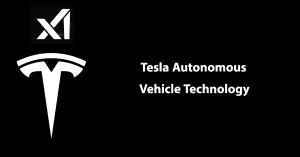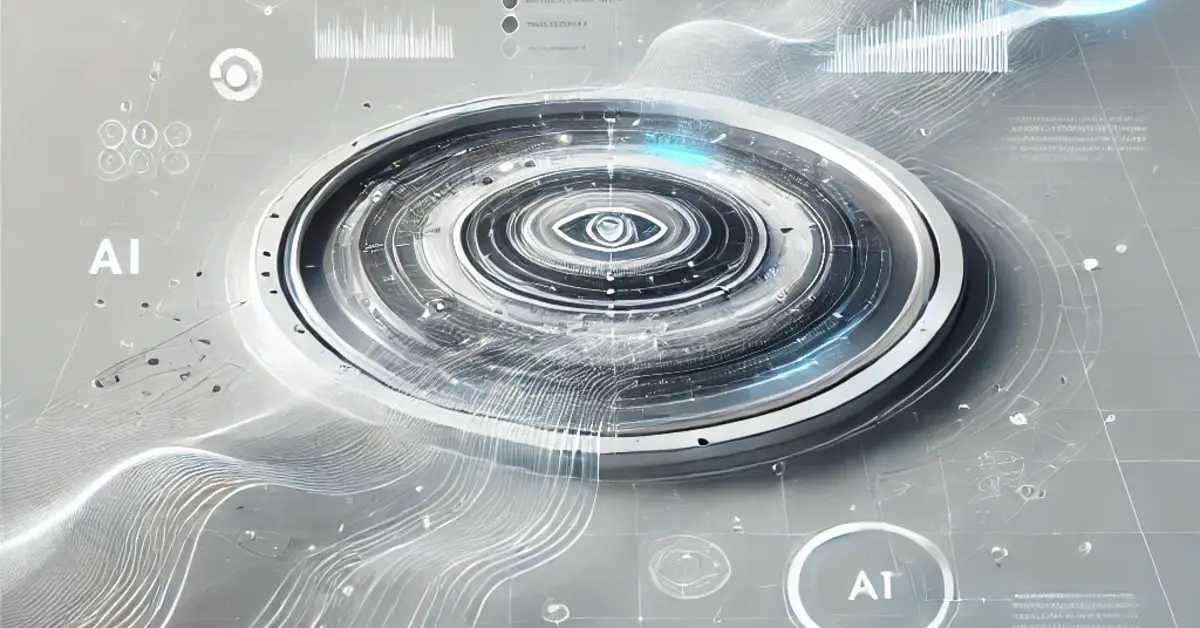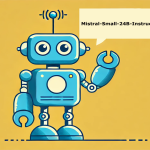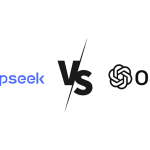- The Strategic Synergy Between xAI and Tesla Autonomous Future: How Elon Musk’s AI Venture Drives EV Innovation
- xAI: A Critical Piece in Tesla’s Autonomous Puzzle
- The Autonomous Race: Data, Talent, and Capital
- Ethical and Regulatory Challenges in AI-Driven Autonomous Driving
- Conclusion: The Road Ahead for xAI and Tesla
The Strategic Synergy Between xAI and Tesla Autonomous Future: How Elon Musk’s AI Venture Drives EV Innovation
The landscape of artificial intelligence and electric vehicles (EVs) is undergoing a seismic transformation, largely due to Elon Musk’s latest venture, xAI. While Tesla has long been a frontrunner in the electric vehicle industry, its pursuit of fully autonomous driving has necessitated a deeper integration of advanced AI technologies. Enter xAI, a company Musk founded not only to push the boundaries of artificial intelligence but also to accelerate Tesla’s progress in developing cutting-edge autonomous driving solutions.
This article explores how xAI is crucial to Tesla’s ambitious plans, the development of its supercomputing infrastructure, and how these technological advancements will likely shape the future of autonomous EVs and other industries.
xAI: A Critical Piece in Tesla’s Autonomous Puzzle
At its core, xAI was established to attract and retain world-class AI talent, many of whom would be reluctant to join a conventional automaker but are drawn to the innovative possibilities within a dedicated AI research firm. Elon Musk recognized that Tesla’s vision of fully autonomous vehicles—capable of navigating complex environments without human intervention—would require more than just in-house development. It needed a robust AI-focused entity to accelerate the development of sophisticated self-driving software and hardware solutions.
According to Adam Jonas, an analyst at Morgan Stanley, the relationship between Tesla and xAI revolves around two key elements: training and simulation. These elements are crucial for developing autonomous driving technology, which requires vast amounts of real-world and simulated data to improve its decision-making algorithms. Tesla’s self-driving system already collects enormous amounts of data from its existing vehicles, but the ability to process and learn from that data depends on AI expertise and supercomputing power, both of which xAI brings to the table.
Colossus Supercomputer: Powering Tesla’s Autonomous Dreams
A cornerstone of xAI’s contribution to Tesla is the development of the Colossus supercomputer, a massive AI cluster based in Memphis. Consisting of 100,000 Nvidia H100 units (with plans to double it to 200,000), Colossus represents one of the most powerful AI computing infrastructures in the world. This supercomputer will allow Tesla to run more complex simulations and improve its machine learning models at an accelerated rate.
The significance of Colossus goes beyond just Tesla. As industries increasingly rely on AI to drive innovation, Colossus could set a new benchmark for high-performance computing in AI-driven industries. For Tesla, this infrastructure is pivotal to refining its Full-Self Driving (FSD) software, which relies on a continuous cycle of data collection, processing, and machine learning. Tesla’s real-world data is enhanced through simulated environments where AI models are rigorously trained before being implemented into its vehicles.
This compute-intensive approach is not just about achieving technical breakthroughs but also about staying ahead in the highly competitive race for autonomous supremacy. With competitors like Alphabet’s Waymo making rapid advancements in robotaxis and autonomous fleet deployments, Tesla’s need for a robust AI backbone has never been more critical.
The Autonomous Race: Data, Talent, and Capital
Autonomous driving is widely considered the next frontier in the automotive industry, with industry giants competing to perfect their technologies. Companies like Waymo and Uber have invested heavily in developing autonomous fleets, leaving little room for error in this high-stakes race. Musk’s vision for Tesla, enhanced by xAI’s capabilities, focuses on the critical trifecta of data, talent, and capital.
The data collected by Tesla’s fleet of vehicles is invaluable, as it provides the company with real-world driving conditions and edge cases that are crucial for improving its autonomous systems. However, as Adam Jonas pointed out, access to data alone is not sufficient. Tesla needs advanced AI models to process this data, and this is where xAI plays a pivotal role. By assembling top-tier AI researchers and providing them with cutting-edge resources, xAI enhances Tesla’s ability to fine-tune its autonomous systems, making them safer and more reliable.
Moreover, Tesla’s vast capital resources allow the company to invest heavily in AI research and development, giving it a significant advantage over smaller competitors. The capital investment into xAI and the construction of the Colossus supercomputer underscores Musk’s long-term strategy for Tesla: to dominate not just the EV market but the autonomous driving market as well.
Environmental Concerns and the Role of Sustainable AI
Despite these technological strides, the environmental impact of AI computing has come under scrutiny. Colossus, like many supercomputers, consumes vast amounts of electricity, leading to concerns about its sustainability. Data centers, particularly those housing AI supercomputers, are notorious for their high energy consumption, raising questions about how Tesla and xAI will reconcile their environmental objectives with the power demands of Colossus.
Musk has long positioned Tesla as a champion of sustainable energy, with its electric vehicles and solar energy products leading the charge. It remains to be seen whether Colossus will eventually rely on renewable energy sources to mitigate its carbon footprint. However, xAI’s focus on efficiency in AI model training suggests that energy use is a consideration, especially as the company continues to scale its operations.
xAI’s Long-Term Vision: Beyond Autonomous Driving
While xAI is currently focused on Tesla’s autonomous vehicle technology, its applications are far-reaching. Musk has hinted that xAI’s capabilities will extend into other industries, including robotics and general artificial intelligence. The cross-pollination of ideas between xAI and Tesla could eventually lead to innovations in robotics, where AI-powered machines operate in environments that are currently too hazardous or complex for humans. Tesla’s development of humanoid robots, such as Optimus, is one such example of how xAI’s advancements could extend far beyond the road.
The Future of Transportation and Beyond
As Tesla continues to push the boundaries of what is possible in autonomous driving, its collaboration with xAI will be instrumental in achieving the company’s long-term goals. With the power of Colossus and the expertise of top AI talent, Tesla is well-positioned to lead the transition to fully autonomous vehicles. But more than that, Tesla’s success in this arena could reshape transportation as a whole, creating safer roads, more efficient logistics systems, and new economic models like robotaxis and autonomous fleets.
Moreover, xAI’s influence is expected to extend beyond the automotive industry, influencing advancements in AI research, robotics, and even space exploration. Musk’s long-term vision for xAI and Tesla goes hand-in-hand with his broader goals for humanity, which include colonizing Mars and solving some of Earth’s most pressing challenges, such as climate change and energy sustainability.
Ethical and Regulatory Challenges in AI-Driven Autonomous Driving
While the partnership between xAI and Tesla holds immense promise for advancing autonomous driving technology, it also brings to light critical ethical and regulatory challenges that need to be addressed. As the integration of artificial intelligence into electric vehicles progresses, it is essential to examine the broader implications of these advancements on society, safety, and governance.
1. Safety and Liability Concerns
The deployment of autonomous vehicles (AVs) powered by AI poses significant questions about safety standards and accountability in case of accidents. Tesla’s Full-Self Driving (FSD) technology, while making strides in automation, must contend with the unpredictable nature of real-world driving environments. Key considerations include:
- Decision-Making in Edge Cases: AVs often encounter scenarios where ethical decisions must be made, such as choosing between two potentially harmful outcomes. These decisions, encoded in AI algorithms, raise questions about how such dilemmas are programmed and evaluated.
- Liability in Accidents: In incidents involving autonomous vehicles, determining liability is complex. Should responsibility fall on the manufacturer, the software developer (xAI), or the vehicle owner? Clear frameworks need to be established to address such cases.
2. Regulatory Landscape
Governments and regulatory bodies worldwide are grappling with how to regulate AI-driven autonomous vehicles. The lack of uniform global standards creates a fragmented landscape that can hinder innovation and deployment.
- Standardization and Certification: Developing globally accepted benchmarks for AV safety, reliability, and performance is crucial. Tesla and xAI must collaborate with policymakers to create transparent evaluation protocols.
- Data Privacy Regulations: With Tesla vehicles collecting vast amounts of real-world data, ensuring compliance with data protection laws such as GDPR and CCPA is paramount. Balancing innovation with user privacy will be critical in gaining public trust.
3. Ethical AI Development
As AI systems play a larger role in decision-making, the ethical implications of their development and deployment cannot be ignored.
- Bias in Algorithms: Ensuring that AI models used in autonomous driving are free from biases that could lead to unequal outcomes for different demographics is essential. Bias in training data or model design could compromise safety and fairness.
- Transparency in AI Models: AI algorithms powering autonomous vehicles should be explainable and auditable to ensure accountability. Stakeholders, including regulators and the public, need visibility into how these systems function and make decisions.
4. Environmental Impact of AI
While Tesla is a leader in sustainable energy, the massive computing power required for AI model training and simulation—particularly with systems like Colossus—raises environmental concerns.
- Energy-Efficient AI: xAI must prioritize the development of energy-efficient AI models to align with Tesla’s sustainability goals. Exploring renewable energy sources for powering data centers and employing green AI practices can help minimize the carbon footprint.
- Lifecycle Analysis of AVs: Beyond training AI, the entire lifecycle of autonomous vehicles—including production, operation, and recycling—should adhere to environmentally responsible practices.
5. Public Perception and Adoption
The success of autonomous vehicles depends not just on technological readiness but also on public acceptance.
- Building Trust Through Transparency: Educating the public about how Tesla’s autonomous systems work and their safety features can foster trust. Clear communication about how xAI’s advancements contribute to safer driving experiences is essential.
- Ethical Branding: As a leader in innovation, Tesla must position itself as an ethical and socially responsible company, emphasizing the societal benefits of its autonomous technology.
Conclusion: The Road Ahead for xAI and Tesla
Elon Musk’s xAI Grok is not just a standalone AI research company but a critical component of Tesla’s strategy to dominate the future of autonomous driving. Through cutting-edge AI research, advanced computing power from Colossus, and a strong emphasis on talent acquisition, xAI is helping Tesla stay ahead in the race to perfect self-driving technology. As Tesla’s vehicles continue to evolve, xAI will be at the heart of this transformation, driving not just the future of transportation but also advancements in robotics, AI, and sustainable energy.
The impact of this partnership between xAI and Tesla could be felt across industries, making both companies leaders in shaping the technological landscape of the future.






